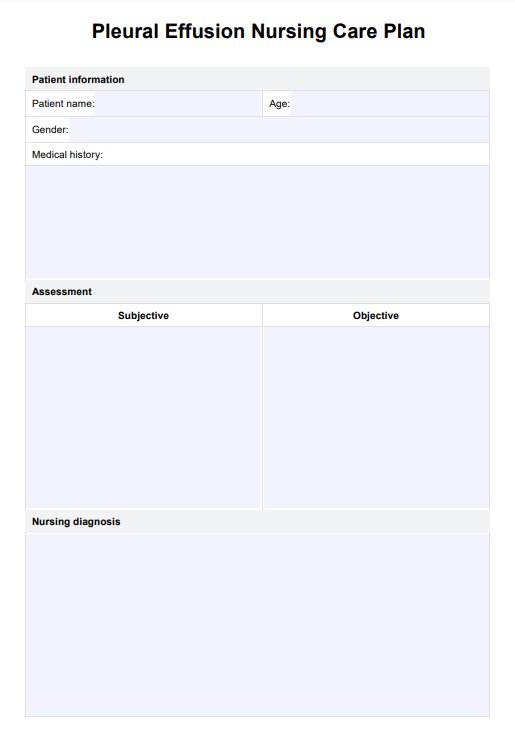Nursing interventions focus on treating the underlying cause, draining excess fluid through thoracentesis or chest tube insertion, and administering antibiotics if infection is present. Other treatments include tunneled pleural catheters for chronic effusions, pleurodesis or surgery for recurrent cases, and dietary changes for chylothorax. Nurses also teach patients breathing exercises and monitor for signs of respiratory compromise and infection.

Pleural Effusion Nursing Care Plan
Learn the ins and outs of this disorder of the lungs and follow the guide to gain insight into its many causes and interventions!
Pleural Effusion Nursing Care Plan Template
Commonly asked questions
Teach patients to perform deep breathing exercises to enhance lung expansion and prevent respiratory compromise. Educate them about recognizing early signs of fluid accumulation, infection, and complications, ensuring medication adherence, and understanding how to manage drainage systems if required.
Related NANDA-approved diagnoses include impaired gas exchange, excess fluid volume, and ineffective breathing pattern. Nurses can also incorporate diagnoses like anxiety and knowledge deficit if the patient experiences distress or lacks information about managing the condition.
EHR and practice management software
Get started for free
*No credit card required
Free
$0/usd
Unlimited clients
Telehealth
1GB of storage
Client portal text
Automated billing and online payments











